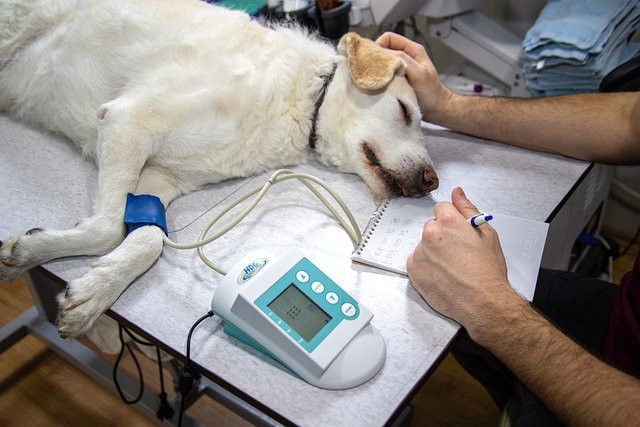Veterinary Cost Management Strategies for Animal Owners
Managing veterinary expenses can be one of the most challenging aspects of responsible pet ownership. As medical treatments for animals become increasingly advanced and sophisticated, the associated costs continue to rise, leaving many owners searching for effective ways to budget for their companions' healthcare needs. Understanding the various financial tools and strategies available can help you provide quality care for your pets without experiencing unexpected financial strain. This article explores practical approaches to managing veterinary costs, including insurance options, coverage mechanisms, and the advantages of planning ahead for your animal's medical needs.

Veterinary care has evolved dramatically over recent decades, offering pets access to treatments that were once available only for humans. However, these advances come with significant costs that can catch unprepared owners off guard. Emergency surgeries, chronic condition management, and routine preventive care all contribute to the overall expense of pet ownership. Developing a comprehensive strategy for managing these costs ensures that financial concerns never prevent you from providing necessary medical attention to your animals.
Understanding Pet Insurance Options
The market for animal healthcare coverage has expanded considerably, offering owners multiple options tailored to different needs and budgets. Traditional comprehensive plans typically cover accidents, illnesses, and sometimes wellness care, while accident-only policies provide more limited protection at lower premiums. Some providers offer customizable plans where you can adjust deductibles, reimbursement percentages, and annual limits to match your financial situation. Wellness add-ons may cover routine vaccinations, dental cleanings, and annual examinations, though these generally increase monthly premiums. When evaluating different options, consider your pet’s age, breed-specific health risks, and your ability to handle unexpected expenses. Pre-existing conditions are typically excluded from coverage, making early enrollment advantageous for younger, healthier animals.
How Pet Coverage Works
Unlike human health insurance that often involves direct billing between providers and insurers, most animal healthcare coverage operates on a reimbursement model. When your pet requires veterinary care, you typically pay the full bill upfront at the clinic, then submit a claim to your insurance provider with itemized receipts and medical records. The insurer reviews the claim against your policy terms, determining which expenses qualify for reimbursement based on your coverage level, deductible, and any applicable exclusions. Reimbursement percentages commonly range from 70% to 90% of eligible expenses after the deductible is met. Processing times vary by provider but generally take between one to three weeks. Annual or per-incident limits may cap the total amount you can claim, and some policies include waiting periods before coverage becomes active for certain conditions. Understanding these mechanics helps set realistic expectations about out-of-pocket costs and cash flow management.
Benefits of Pet Insurance Plans
Investing in animal healthcare coverage offers numerous advantages beyond simple cost reduction. Financial predictability ranks among the primary benefits, as monthly premiums replace the uncertainty of potentially catastrophic veterinary bills. This predictability enables owners to make medical decisions based on their pet’s needs rather than their immediate financial capacity. Coverage can provide access to specialized treatments, advanced diagnostics, and referrals to veterinary specialists that might otherwise be financially prohibitive. Many policies include additional benefits such as 24/7 helplines staffed by veterinary professionals, lost pet assistance, and coverage for alternative therapies like acupuncture or physiotherapy. The peace of mind that comes from knowing you can afford necessary care reduces stress during already difficult situations when your companion is ill or injured. For owners of multiple pets, some providers offer multi-pet discounts that make protecting an entire household more affordable.
Real-World Cost Considerations and Provider Comparisons
Understanding the financial landscape of animal healthcare coverage helps owners make informed decisions. Monthly premiums vary significantly based on factors including pet species, age, breed, location, and chosen coverage level. For dogs in Mexico, basic accident-only coverage might start around 300-500 MXN monthly, while comprehensive plans typically range from 600-1,400 MXN monthly for healthy adult animals. Cats generally cost less to insure, with comprehensive coverage often available for 400-1,000 MXN monthly. Deductibles commonly range from 2,000-10,000 MXN annually or per incident, and reimbursement levels typically fall between 70-90% of eligible expenses.
| Provider Type | Coverage Level | Estimated Monthly Cost (MXN) | Key Features |
|---|---|---|---|
| Basic Plans | Accident Only | 300-600 | Emergency injuries, broken bones, ingestion incidents |
| Mid-Tier Plans | Accident & Illness | 600-1,000 | Includes diagnostics, medications, surgeries |
| Comprehensive Plans | Full Coverage + Wellness | 1,000-1,600 | Routine care, preventive treatments, specialist visits |
| Senior Pet Plans | Age-Adjusted Coverage | 1,200-2,000 | Higher premiums, potential condition exclusions |
Prices, rates, or cost estimates mentioned in this article are based on the latest available information but may change over time. Independent research is advised before making financial decisions.
Alternative Cost Management Strategies
Beyond traditional coverage, several complementary approaches can help manage veterinary expenses effectively. Establishing a dedicated savings account specifically for pet medical costs creates a self-funded emergency reserve without monthly premium commitments. Many veterinary clinics offer wellness plans that bundle routine services like vaccinations, examinations, and dental cleanings into predictable monthly payments, often at discounted rates compared to paying separately. Credit options designed specifically for medical expenses provide interest-free financing periods for qualifying treatments. Some nonprofit organizations and veterinary schools offer reduced-cost services, particularly for routine procedures. Preventive care remains the most cost-effective strategy, as regular check-ups, proper nutrition, and appropriate exercise can prevent many expensive conditions from developing. Building a relationship with a trusted veterinarian who understands your financial constraints can lead to discussions about treatment priorities and cost-effective alternatives when multiple options exist.
Making Informed Decisions About Coverage
Selecting the right financial protection strategy requires careful evaluation of your specific circumstances. Assess your pet’s health status, breed predispositions to certain conditions, and your personal risk tolerance regarding unexpected expenses. Review policy documents thoroughly, paying particular attention to exclusions, waiting periods, and claim procedures. Consider whether you prefer lower monthly premiums with higher out-of-pocket costs during incidents, or higher premiums with more comprehensive protection. Read reviews from actual policyholders about their claim experiences, as customer service quality and claim processing efficiency vary considerably among providers. Calculate the break-even point by comparing total premiums paid over time against typical veterinary expenses for your pet’s demographic. Remember that coverage becomes more expensive and harder to obtain as pets age, making early enrollment advantageous even if your animal is currently healthy.
Managing veterinary costs effectively combines multiple strategies tailored to your financial situation and your pet’s needs. Whether through formal coverage, dedicated savings, or preventive care emphasis, planning ahead ensures that financial concerns never compromise your ability to provide quality medical attention. By understanding available options and their mechanics, you can create a sustainable approach to animal healthcare that protects both your companion’s wellbeing and your financial stability.




